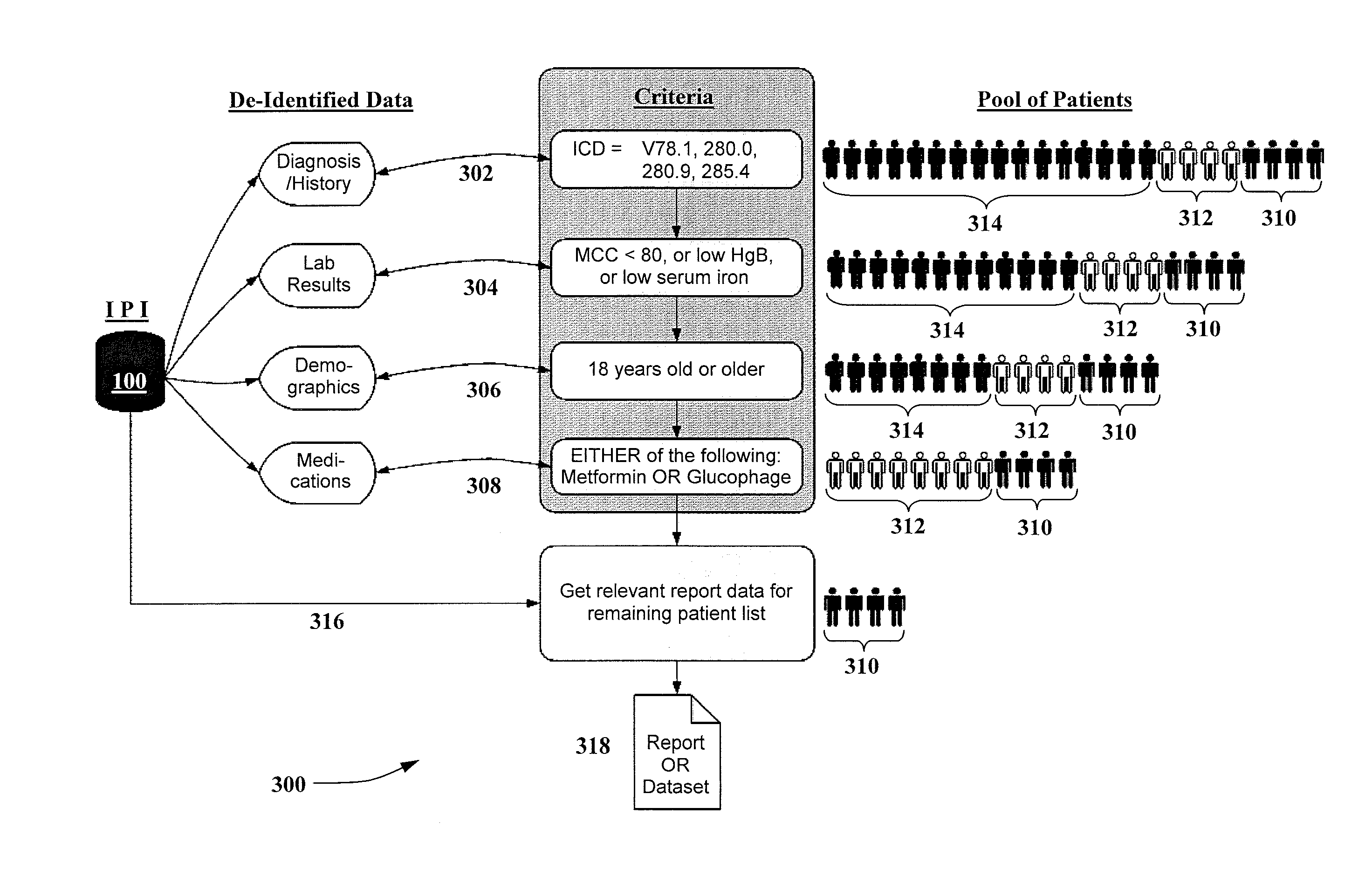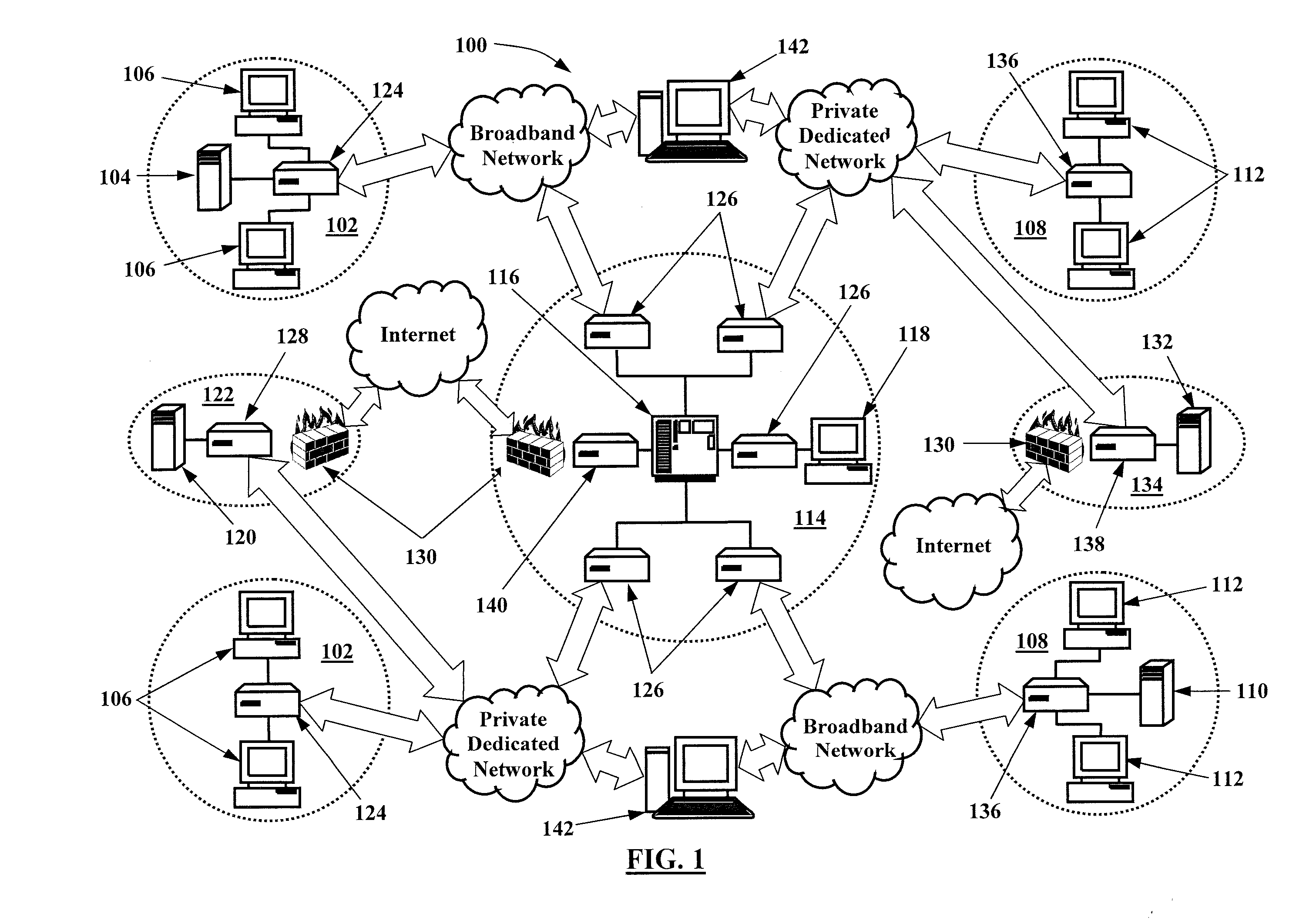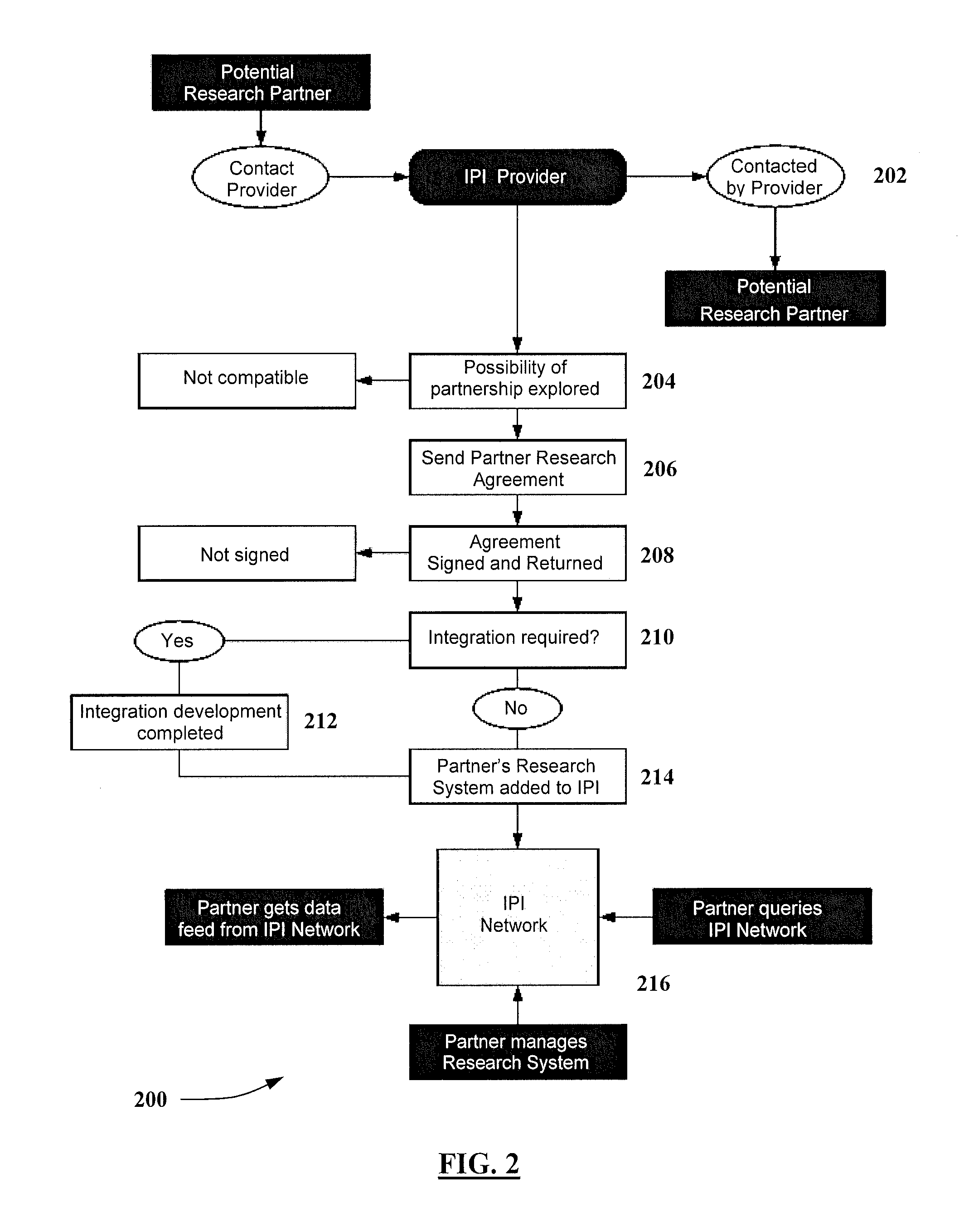System and method for recruiting patients for medical research across a vast patient population
a patient population and patient technology, applied in the field of system and method, can solve the problems of requiring a significant amount of patient time that could otherwise be spent with the patient, requiring a significant amount of healthcare provider's time, and the manual, paper-based practice of keeping patient information, etc., to achieve the effect of improving patient satisfaction, reducing the number of patients
- Summary
- Abstract
- Description
- Claims
- Application Information
AI Technical Summary
Benefits of technology
Problems solved by technology
Method used
Image
Examples
Embodiment Construction
[0019]Reference will now be made in detail to non-limiting embodiments of the present invention by way of reference to the accompanying drawings, wherein like reference numerals refer to like parts, components and structures.
[0020]The present invention provides infrastructure and functionality for analyzing, collecting, and tracking data across a vast patient population. And, the present invention provides infrastructure and functionality for utilizing that data to more effectively and efficiently perform medical research, maintain disease registries, track patient care for quality and safety initiatives, and perform composite clinical and financial analytics. The present invention may be implemented via an integrated physician's infrastructure (IPI) 100 that includes a network of fully functional EHR systems that are built on the same architecture, such as Greenway Medical Technologies, Inc.'s IPI that includes its PRIMESUITE brand EHR systems. The IPI 100 also includes a plurality...
PUM
 Login to View More
Login to View More Abstract
Description
Claims
Application Information
 Login to View More
Login to View More - R&D
- Intellectual Property
- Life Sciences
- Materials
- Tech Scout
- Unparalleled Data Quality
- Higher Quality Content
- 60% Fewer Hallucinations
Browse by: Latest US Patents, China's latest patents, Technical Efficacy Thesaurus, Application Domain, Technology Topic, Popular Technical Reports.
© 2025 PatSnap. All rights reserved.Legal|Privacy policy|Modern Slavery Act Transparency Statement|Sitemap|About US| Contact US: help@patsnap.com



